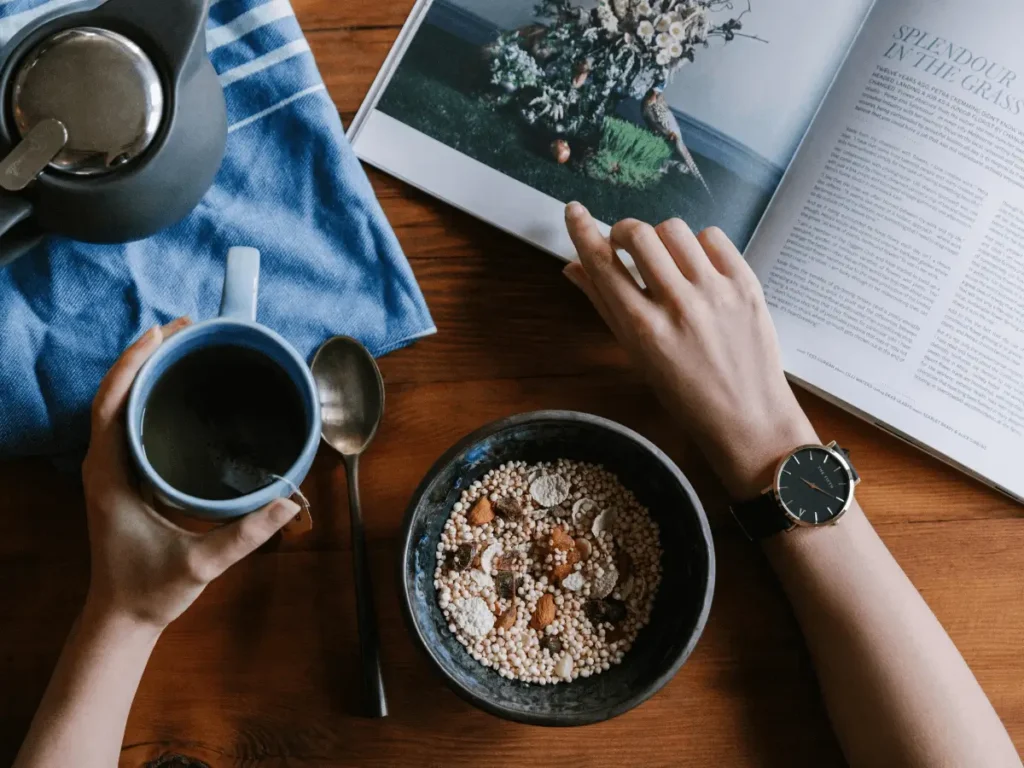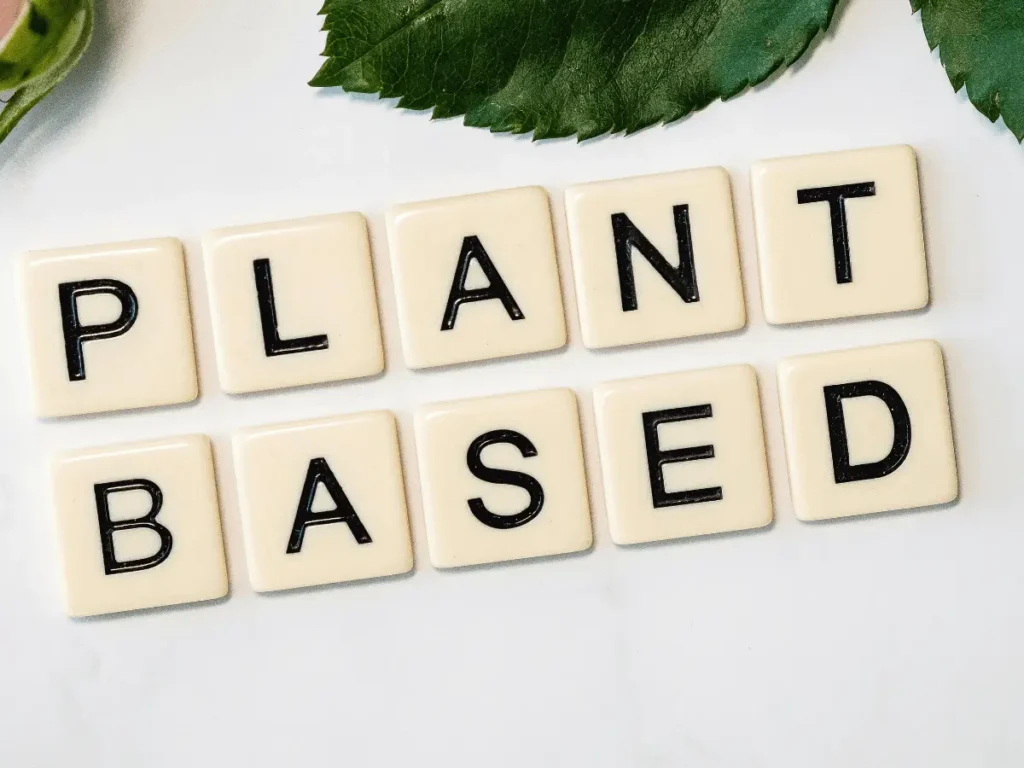Why Choose Vegan Recipes for Your Diet?
A vegan diet eliminates all animal products, focusing on plant-based foods like fruits, vegetables, legumes, grains, nuts, and seeds. This way of eating not only supports your body’s nutritional needs but also aligns with ethical and environmental goals:- Health Benefits:
- Lower risks of chronic diseases like heart disease and diabetes.
- Improved digestion thanks to high fiber content.
- Naturally low in saturated fats.
- Environmental Impact:
- Reduced carbon footprint compared to diets reliant on meat and dairy.
- Conserves water and minimizes deforestation caused by livestock farming.
- Ethical Choices:
- Protects animal rights and promotes cruelty-free living.
What to Expect in This Article
This comprehensive guide is designed to introduce a variety of vegan recipes, from simple dishes for beginners to globally inspired meals. You’ll also discover tips to balance your diet with essential nutrients, practical meal-planning advice, and answers to common questions like:- “What vegan foods are highest in protein per 100g?”
- “How to get 100g protein per day?”
- “How do vegans get most of their protein?”
Exploring Easy and Global Vegan Recipes
A vegan diet can be as diverse and exciting as any other. With cuisines from around the world and simple pantry staples, the options are virtually endless. Let’s explore some globally inspired vegan recipes and easy meal ideas to get you started.What is a Vegan Diet and How Does it Relate to Vegan Recipes?
A vegan diet excludes all forms of animal products, including meat, dairy, eggs, and even honey. Instead, it focuses on a wide variety of plant-based foods such as:- Fruits and vegetables
- Legumes: lentils, chickpeas, black beans
- Whole grains: quinoa, rice, oats
- Nuts and seeds: almonds, flaxseeds, chia seeds
- Plant-based alternatives: tofu, tempeh, plant milks
Popular Global Vegan Recipes
Explore vegan cuisine from around the world and add some variety to your meals with these flavorful dishes:Asian-Inspired Vegan Recipes
- Veggie Yaki Udon A stir-fried noodle dish with a mix of fresh vegetables and a savory soy-based sauce. Key Ingredients: Udon noodles, broccoli, bell peppers, soy sauce, sesame oil.
- Spring Rolls with Soy Sauce Fresh spring rolls filled with julienned veggies and herbs, served with a tangy dipping sauce. Key Ingredients: Rice paper, carrots, cucumber, cilantro, soy sauce.
Mediterranean Vegan Recipes
- Tabbouleh A refreshing salad featuring bulgur, parsley, and lemon juice. Key Ingredients: Bulgur, parsley, tomatoes, olive oil, lemon juice.
- Falafel Crispy chickpea fritters seasoned with spices, perfect for wraps or salads. Key Ingredients: Chickpeas, garlic, cumin, coriander.
American Vegan Classics with a Twist
- Vegan BBQ Pulled Jackfruit Tacos Smoky and tangy tacos filled with shredded jackfruit. Key Ingredients: Jackfruit, barbecue sauce, tortillas, slaw mix.
- Guacamole with a Twist A creamy avocado dip spiced up with extra lime and jalapeños. Key Ingredients: Avocados, lime, jalapeño, cilantro.
Indulgent Vegan Dessert Recipes
- Vegan Brownies Rich and fudgy brownies made without eggs or dairy. Key Ingredients: Cocoa powder, almond milk, flaxseed meal.
- Plant-Based Ice Cream Creamy and smooth, made with coconut milk or cashew cream. Key Ingredients: Coconut milk, vanilla extract, sweeteners.
Easy Vegan Recipes for Beginners
If you’re new to vegan cooking, start with these simple, pantry-friendly recipes that require minimal effort and ingredients.Pantry-Ready Vegan Recipes for Quick Meals
- Simple Vegan Chili A hearty and protein-packed dish using canned beans and tomatoes. Key Ingredients: Kidney beans, black beans, diced tomatoes, chili powder.
- Lentil Soup A comforting and nutrient-dense meal that’s quick to prepare. Key Ingredients: Red lentils, vegetable broth, carrots, onions, celery.
Balanced and Quick Vegan Recipes
- Stuffed Bell Peppers Bell peppers filled with quinoa, black beans, and veggies, baked to perfection. Key Ingredients: Bell peppers, quinoa, black beans, corn.
- Sweet Potato Curry A creamy and aromatic curry loaded with sweet potatoes and spinach. Key Ingredients: Sweet potatoes, coconut milk, curry paste, spinach.

Nutritional Tips for Vegans
Eating a vegan diet is not only delicious but also provides numerous health benefits. However, like any dietary choice, it’s essential to ensure you’re meeting your body’s nutritional needs. Protein, vitamins, and minerals like B12 and iron are crucial for a balanced diet. This section will help you understand how to meet those needs effectively.FAQs About Protein in Vegan Recipes
Protein is a key nutrient that supports muscle repair, immunity, and overall health. Many wonder how vegans can achieve sufficient protein intake without animal products. Let’s answer the most common questions.What Vegan Foods Are Highest in Protein per 100g?
Certain plant-based foods pack a powerful protein punch. Here are some of the best options per 100g:- Tempeh: 19g
- Tofu (Firm): 10g
- Lentils (Cooked): 9g
- Chickpeas (Cooked): 8g
- Quinoa: 4g
- Hemp Seeds: 31g
- Peanuts: 25g
How to Get 100g of Protein Per Day?
Achieving 100 grams of protein daily on a vegan diet is absolutely possible with careful meal planning. Here’s an example of a high-protein vegan meal plan to help you reach your goal:- Breakfast: Smoothie made with pea protein powder (20g), almond butter (7g), and chia seeds (5g). Total: 32g protein
- Lunch: Quinoa salad with chickpeas (15g), tempeh (19g), and a tahini dressing (4g). Total: 38g protein
- Dinner: Lentil curry (18g) served with a side of brown rice (4g). Total: 22g protein
- Snacks: Roasted edamame (12g). Total: 12g protein
How Do Vegans Get Most of Their Protein?
Vegans primarily rely on plant-based protein sources. These include:- Legumes: Lentils, black beans, chickpeas.
- Soy Products: Tofu, tempeh, edamame.
- Grains: Quinoa, farro, buckwheat.
- Nuts and Seeds: Almonds, sunflower seeds, chia seeds.
- Plant-Based Protein Powders: Made from peas, rice, or hemp.
Essential Nutrients in Vegan Recipes
Beyond protein, there are a few other nutrients that vegans should monitor:Vitamin B12
- Found naturally in animal products, so vegans should look for fortified foods (e.g., plant milks, nutritional yeast) or take a supplement.
Iron
- Plant-based sources include spinach, lentils, and fortified cereals. Pair with vitamin C-rich foods (like citrus fruits) for better absorption.
Omega-3 Fatty Acids
- Found in flaxseeds, chia seeds, and walnuts. Consider an algae-based omega-3 supplement if needed.
Calcium
- Obtainable from fortified plant milks, tofu, and leafy greens like kale.
Zinc
- Present in legumes, nuts, seeds, and whole grains.
Planning Your Week with Vegan Recipes
 A well-planned vegan diet ensures not only nutritional balance but also variety and excitement at every meal. Meal planning can save time, money, and stress, making it easier to stick to your plant-based lifestyle. This section will guide you on how to plan your week with ease.
A well-planned vegan diet ensures not only nutritional balance but also variety and excitement at every meal. Meal planning can save time, money, and stress, making it easier to stick to your plant-based lifestyle. This section will guide you on how to plan your week with ease.The Importance of Planning Vegan Recipes
Meal planning is a powerful tool for anyone, but it’s particularly beneficial for vegans because it:- Ensures Nutritional Balance: Helps include all the essential nutrients like protein, iron, and vitamins.
- Reduces Food Waste: By purchasing only what you need, you cut down on waste.
- Saves Money: Avoid expensive takeout or convenience foods by cooking at home.
- Saves Time: Prepping meals in advance means less time in the kitchen during the week.
How to Plan Your Vegan Week
Step 1: Build a Shopping List
Start by stocking up on vegan staples. Here’s a quick checklist:- Proteins: Lentils, chickpeas, tofu, tempeh.
- Grains: Quinoa, rice, oats.
- Fruits and Vegetables: Broccoli, spinach, sweet potatoes, bananas.
- Pantry Items: Canned tomatoes, beans, nut butters.
- Condiments: Soy sauce, tahini, nutritional yeast.
Step 2: Batch Cook Essentials
Prepare large quantities of versatile ingredients to mix and match throughout the week. Examples include:- Cooked quinoa or rice.
- Roasted vegetables (e.g., sweet potatoes, carrots).
- Batches of hummus or dips.
- Soups or stews, such as lentil soup or vegan chili.
Step 3: Assemble Meals
Combine your prepped ingredients into balanced and delicious meals. Use the following template for variety:- Breakfast: Overnight oats with almond milk and chia seeds.
- Lunch: Quinoa bowl with roasted veggies, chickpeas, and tahini dressing.
- Dinner: Stir-fried tofu with broccoli and rice.
- Snacks: Fresh fruit, nuts, or roasted edamame.
Sample Weekly Vegan Recipe Plan
Here’s a sample weekly plan to inspire your vegan meal planning:Monday- Breakfast: Smoothie with spinach, banana, and plant-based protein.
- Lunch: Lentil salad with tomatoes and cucumbers.
- Dinner: Vegan chili with cornbread.
- Breakfast: Avocado toast with a sprinkle of nutritional yeast.
- Lunch: Quinoa bowl with black beans and salsa.
- Dinner: Sweet potato curry with rice.
- Breakfast: Chia pudding with almond milk and fresh berries.
- Lunch: Hummus wrap with spinach and roasted red peppers.
- Dinner: Tofu stir-fry with vegetables.
- Breakfast: Oatmeal topped with walnuts and dried cranberries.
- Lunch: Buddha bowl with roasted veggies and tahini sauce.
- Dinner: Spaghetti with marinara sauce and vegan meatballs.
- Breakfast: Smoothie bowl with granola and coconut flakes.
- Lunch: Chickpea salad sandwich.
- Dinner: Vegan pizza with cashew cheese.
- Use leftovers creatively or try a new recipe, such as vegan sushi rolls or falafel burgers.
FAQs and Additional Tips

Common Questions About Vegan Recipes
Adopting a vegan diet often comes with questions and misconceptions. Here are a few common concerns:- Can vegans get enough protein? Yes! Plant-based foods like lentils, tofu, and quinoa are rich in protein. Combining various sources ensures you meet your needs.
- Is a vegan diet expensive? A vegan diet can be affordable by focusing on whole foods like grains, beans, and seasonal vegetables rather than processed alternatives.
- Will I feel full on a vegan diet? Fiber-rich foods such as beans, vegetables, and whole grains keep you full and satisfied longer.
Expert Tips for Success with Vegan Recipes
Gradual Transition to Veganism
If you’re new to veganism, start slow. Begin with one vegan meal a day, then increase to entire days or weeks. This gradual shift helps you adapt without feeling overwhelmed.How to Deal with Cravings
Cravings are normal during dietary changes. Combat them by:- Keeping satisfying vegan snacks like roasted nuts or dark chocolate on hand.
- Exploring vegan alternatives for your favorite dishes, like dairy-free cheese or plant-based meats.
